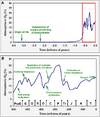Is this an example that more is merrier???
I don't know. Remember the case of the little girl who had a stroke en utero and has now had over 1000 sessions with all her attendant improvements? How much CAN we improve? What are the limits?
I don't recall anything else we've done over the years that is so generally beneficial and appears to have so much potential with no downsides.
I'm beginning to think that all members should get together in small groups and buy units together - say 8 people max - and set up a way for all to participate in the benefits for extended periods of time. Obviously, that is not possible paying for sessions at a commercial place. But one machine can run all day and do 8 sessions. You have to allow the ten minutes or so for pressurizing and a few minutes for coming up. But 8 is doable if you schedule tightly. So, dividing the cost between 8 people might be manageable.
Also, if someone is better able to afford the unit and there are other members nearby who can't afford much to pitch in, it would be a service to include them also.






